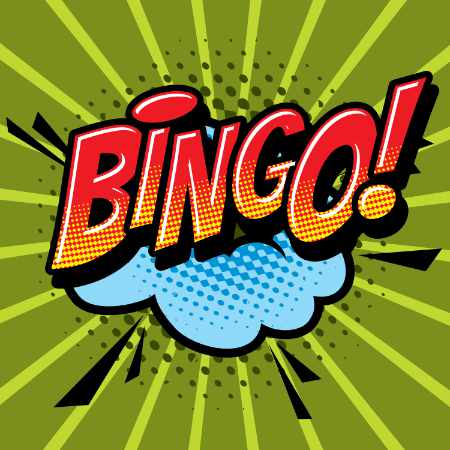Classmate BINGO! is a fun class mingle communicative activity for ESL (EFL) classes. It is very similar to the ESL staple ‘Find Someone Who…’ activity, and is just as versatile. However, because it’s bingo it may be more exciting for your learners. Incorporating some Classmate BINGO! activities into your classes is a great way to add a bit more variety to your activities.
How does it work?
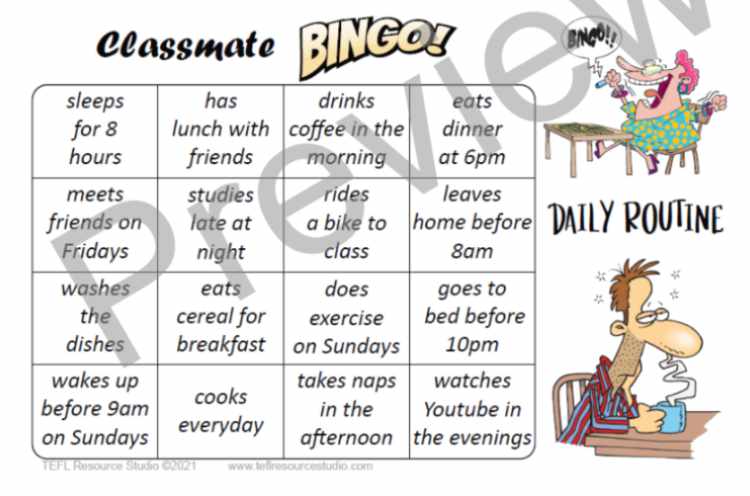
Students are given a 4×4 bingo grid. Each square of the bingo grid has a speaking prompt. Students must form a question based on the speaking prompt. Then they must mingle around the class asking other students the question until they get a positive response. When they get a ‘Yes’, they can cross the square out. Once they get four squares in a row, they call ‘BINGO!’.
How to set it up
The most important phase of any activity is the set-up phase. Start by choosing one of the prompts and writing it on the board. Write a large question mark below, and ask students how to make a question. You could also write ‘you’ on the board, to make it clear you want a question with ‘you’ in it. When you get the correct response, write the question on the board.

Choose one student (one of your stronger students) and ask them the question. If their reply is no, move on to another student. When you get a positive response, cross one of the squares off your grid. Do this in an exaggerated way, and show the grid to your students so that they understand. If you are doing an ice-breaker Bingo activity, now is a good time to ask the student’s name. Next, ask a suitable follow up question to show students that that you want them to engage in conversation whenever possible.
How to get the most out of it
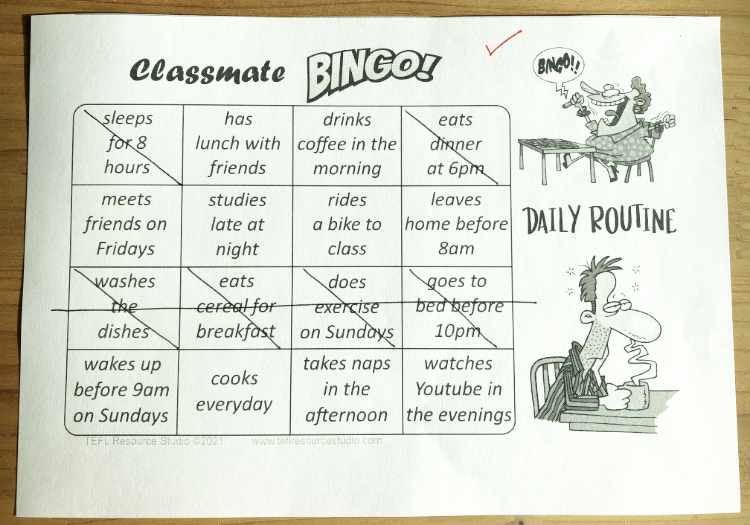
Students only need 4 squares in a row to get bingo. This could therefore be a rather short activity – especially for your stronger students. Therefore, after each bingo have students come to you for confirmation. Draw a check mark or circle at the top of their paper, and ask them to get another line for Bingo! Once they have two, ask them to get one more, then they can sit down. By the time the stronger students have 3 bingo and are sitting down, the weaker students should have got at least 1 line of Bingo. This way, the stronger students get plenty of practice, while the weaker students get the chance to complete the activity and feel as though they achieved the task.
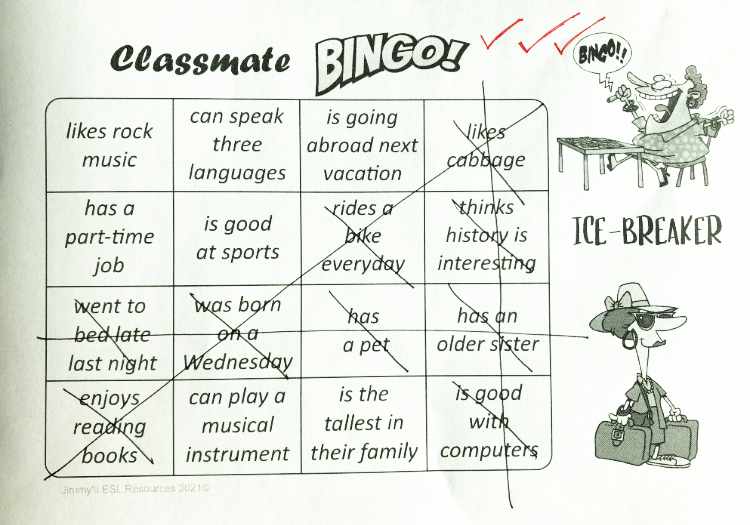
Variations
One of the main differences between Classmate BINGO! and a Find Someone Who…’ activity, is that the latter clearly requires students to write down the names of students who gave a positive response. You can still do this with Classmate BINGO! – however, you MUST demonstrate this clearly in the set-up phase. Have students write the names in the Bingo squares, there should be plenty of room. You can police this by only accepting a ‘Bingo’ if all squares in the line have a name written in it.
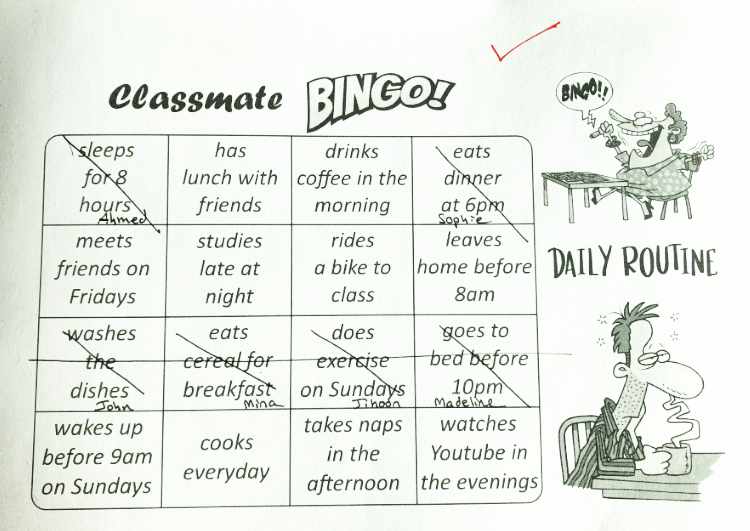
Another difference with ‘Find Someone Who…’ is that often ‘Find Someone Who…’ activities ask students for more information and therefore encourage students to ask follow-up questions. You can still do this with most Classmate Bingo activities however, you will need to demonstrate this clearly in the set-up phase. There is plenty of space outside of the bingo grid for students to make notes if they wish.
Find Someone Who or Classmate Bingo?
So, you like the sound of Classmate Bingo! and you want to have a go at making your own activity. Here are a few things to consider when choosing between a FSW activity and Classmate Bingo! Firstly, Bingo has 16 squares, so you need 16 question prompts, whereas a typical ‘Find Someone Who…’ activity has between 8 and 10. I suggest writing down all of your questions first and if you can get over sixteen, you are good to go.
The second thing to consider is the Bingo squares are somewhat limited in space. It may be difficult to squeeze in longer prompts without significantly reducing the text size. For longer question prompts, a ‘Find Someone Who…’ activity is a better choice and will save you a lot of headaches with formatting.
Try Classmate BINGO! with your students.
Now that you know how to do Classmate BINGO!, try it with your students. You never know until you try. There are currently 12 Classmate Bingo! products on my TpT Store, for practising a range of language from Likes & Dislikes, Past Simple, Experiences (Present Perfect), Abilities (Can), and Daily Routines (Present Simple). I also have a variety of Ice-Breaker Bingo! activities – all of which are suitable for different levels ranging from Elementary to Upper-Intermediate.
Now what are you waiting for? Get a Classmate BINGO! activity and try it in your class!
If you’d like to stay up to date with new ideas and resources for your ESL language classroom, why not sign up to our newsletter?

